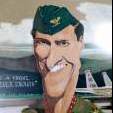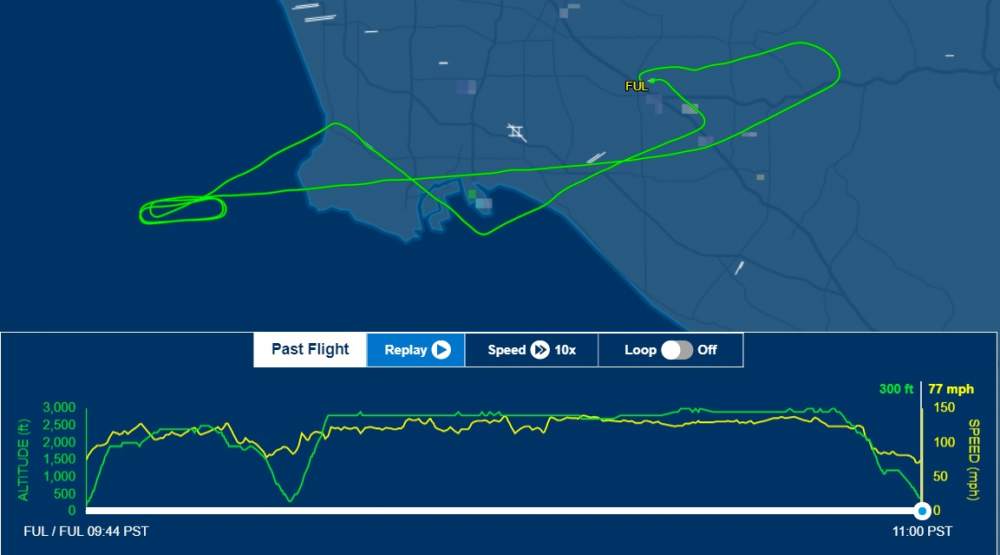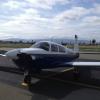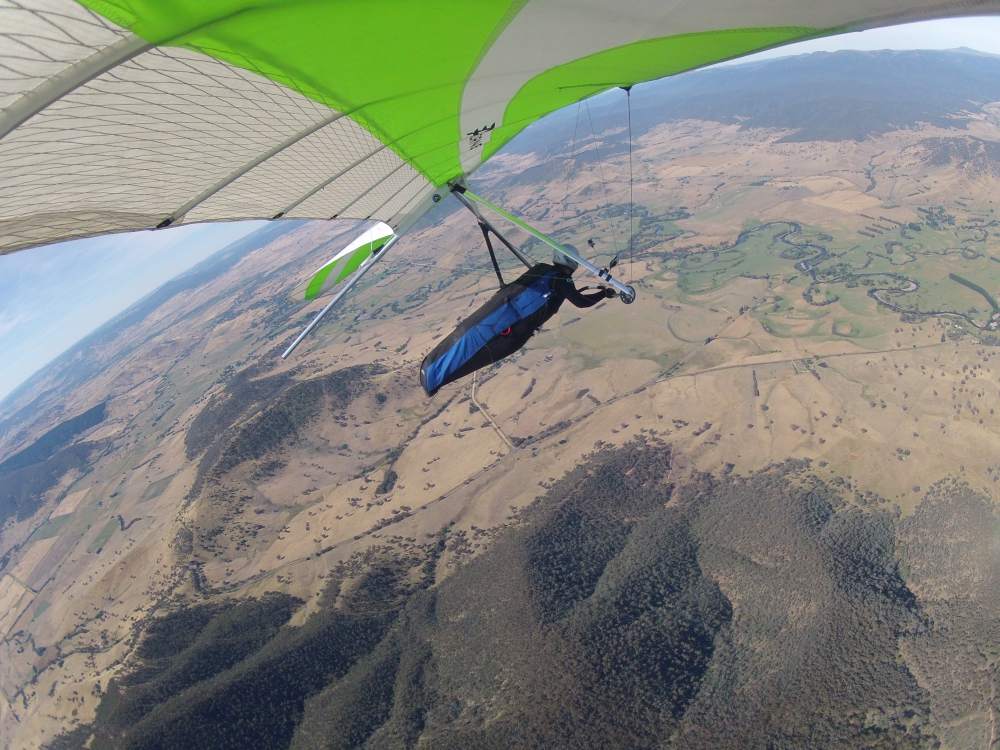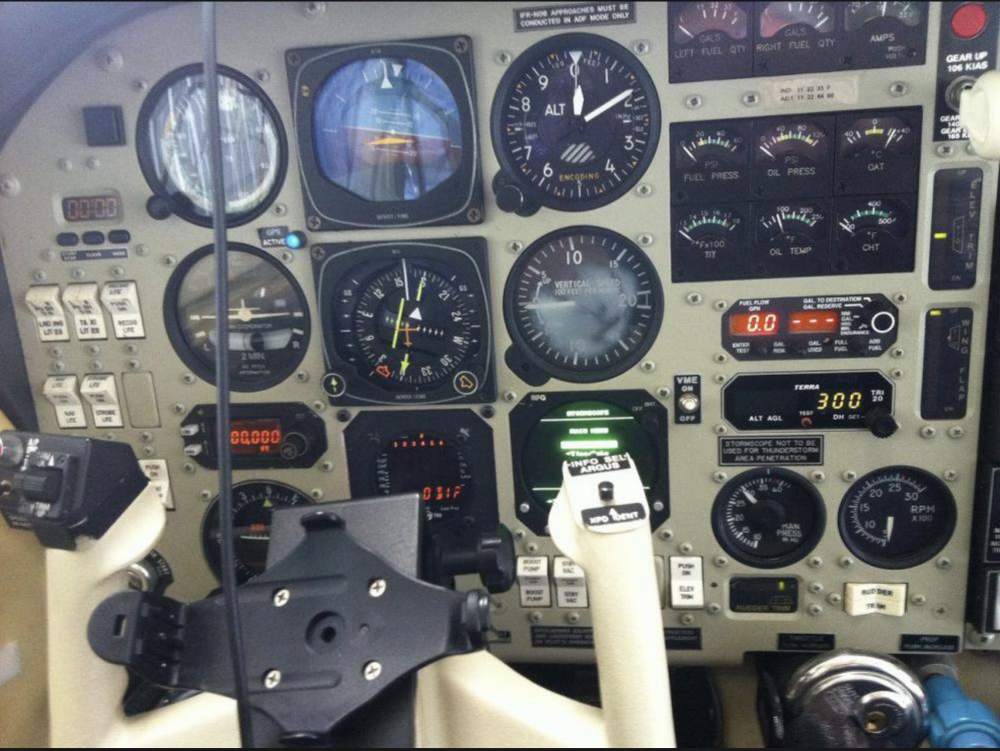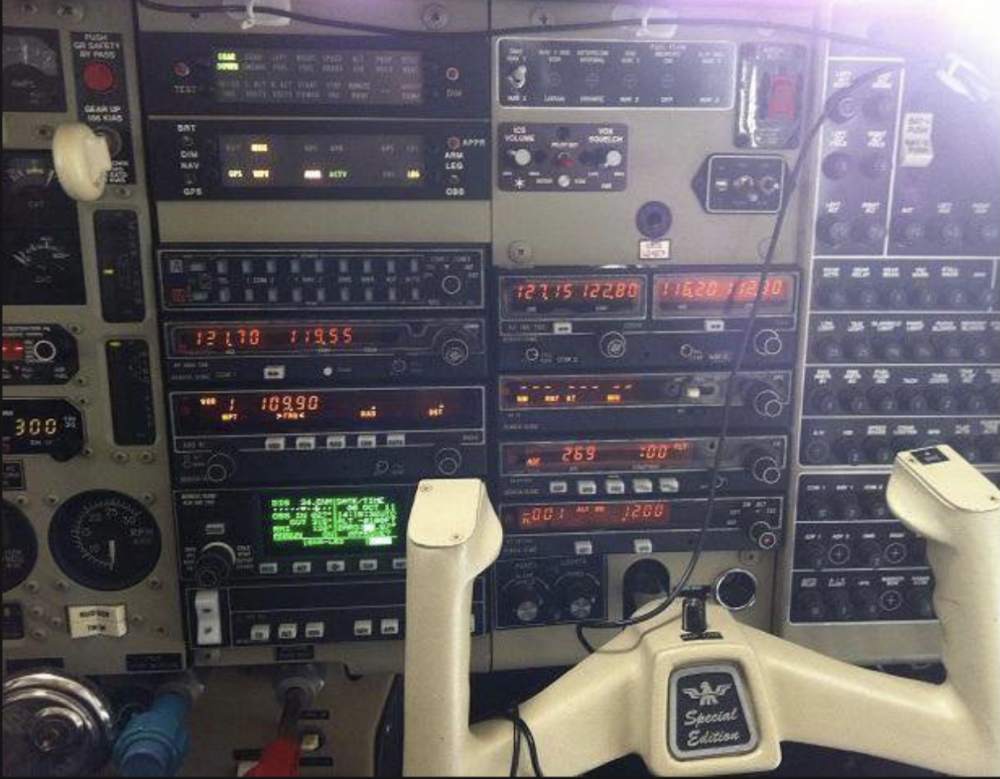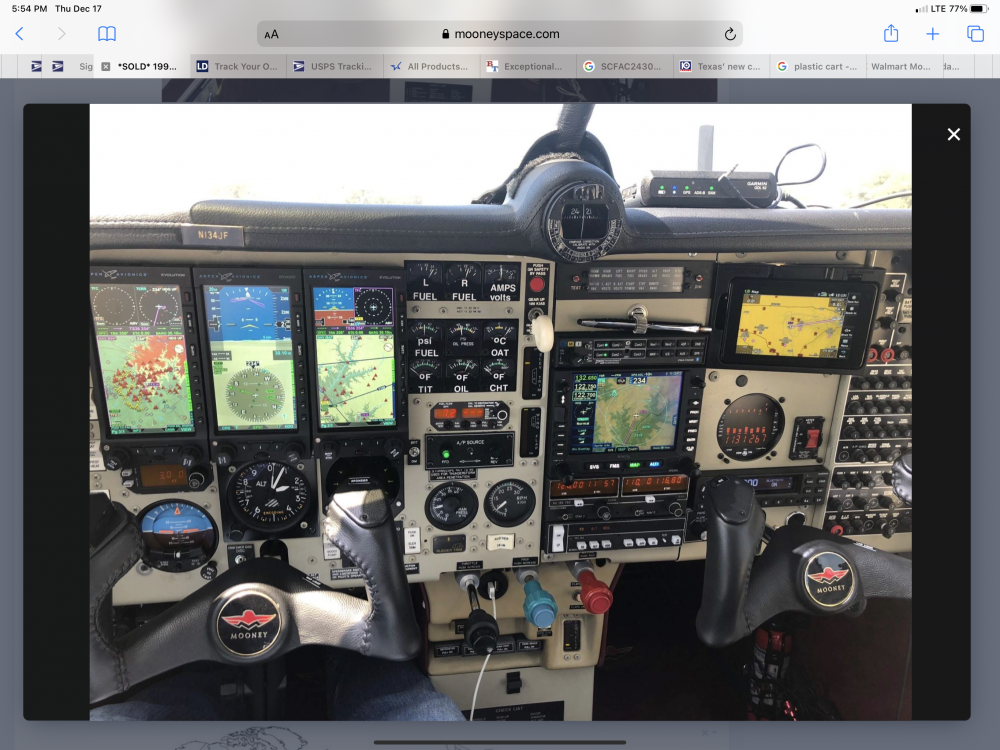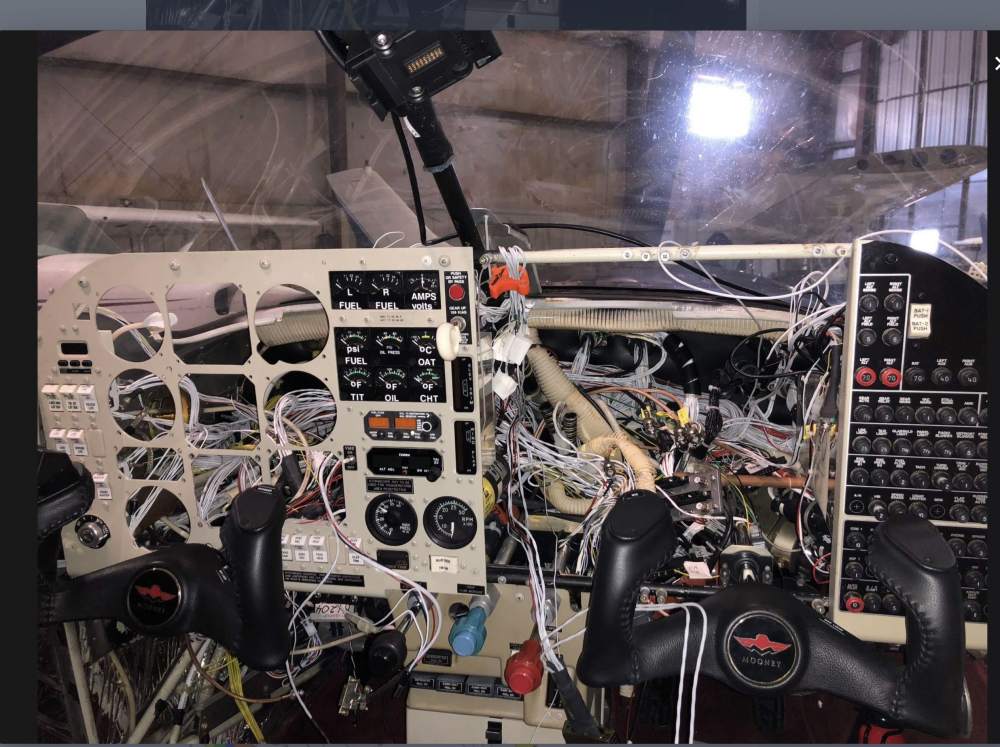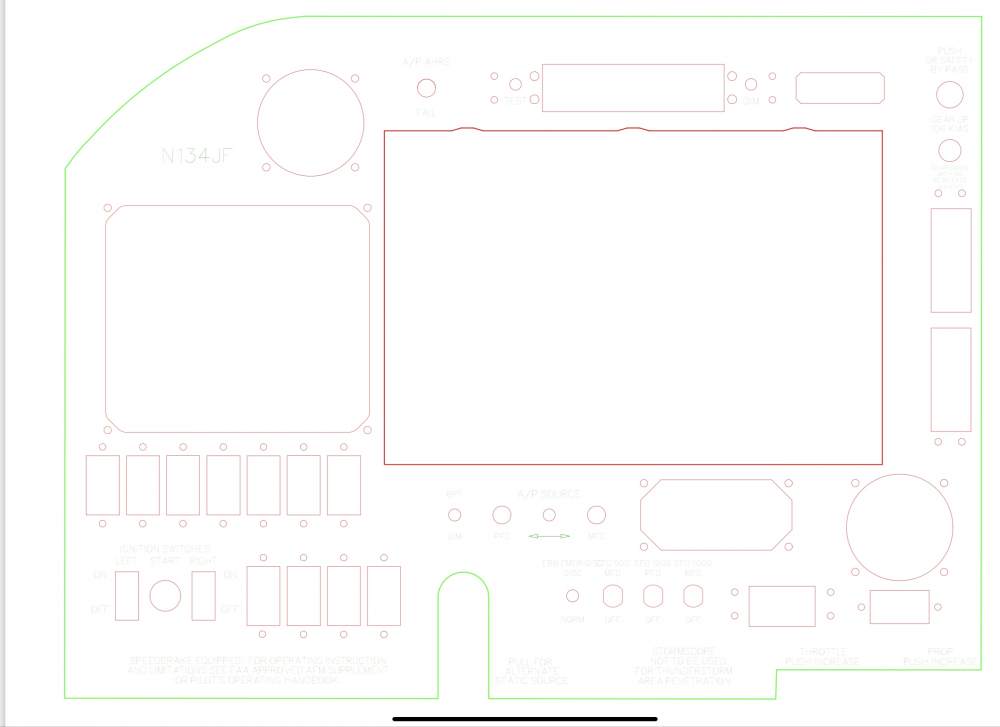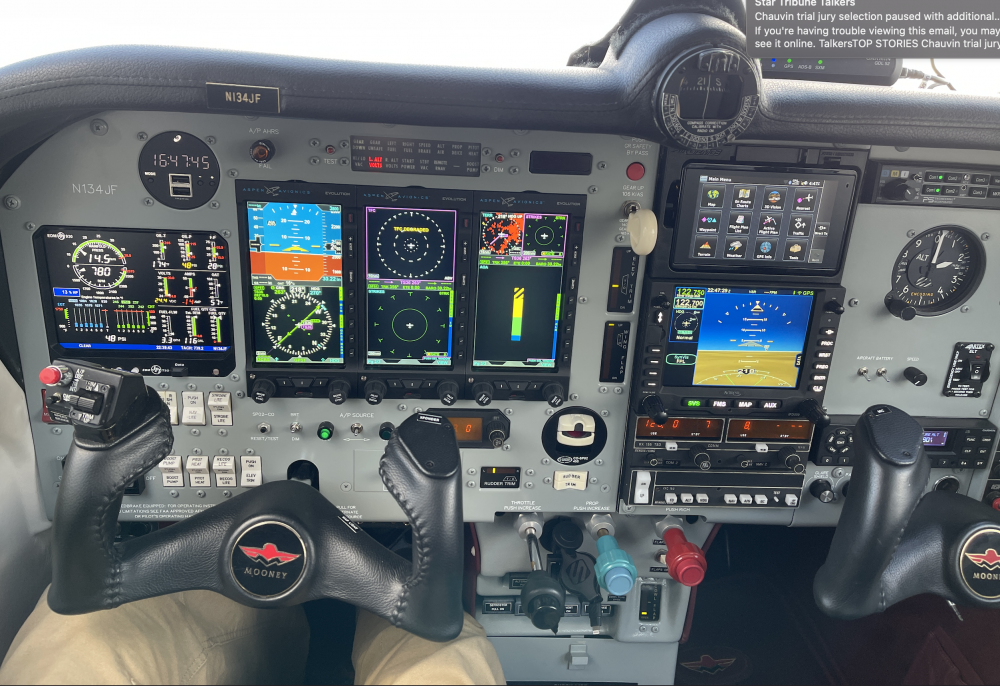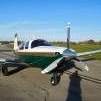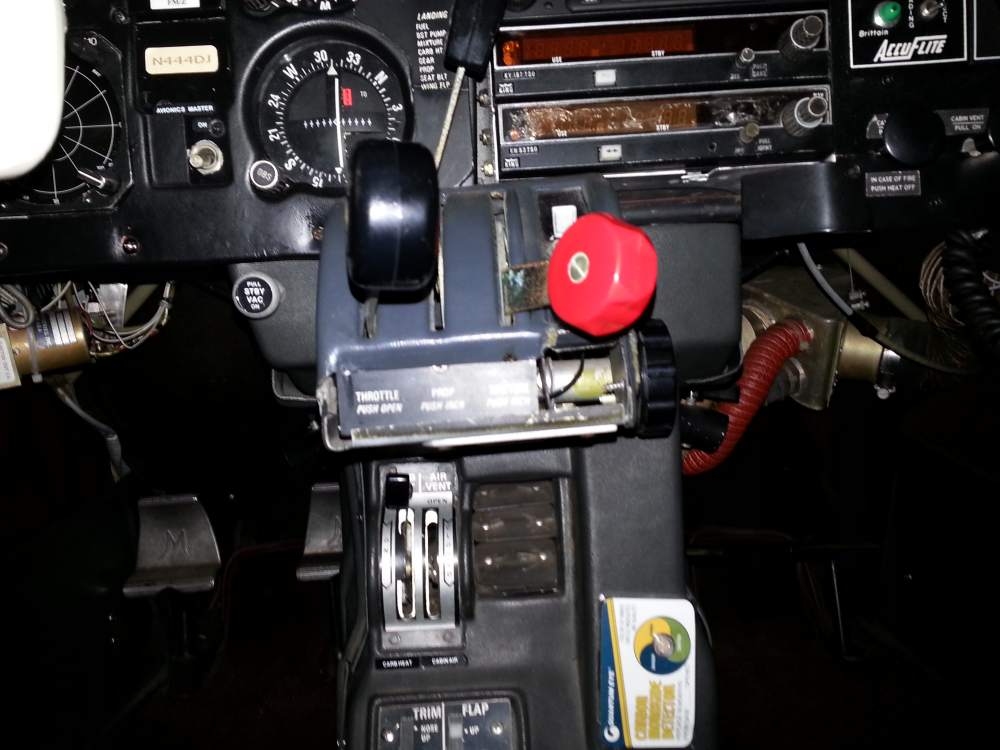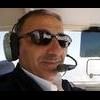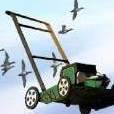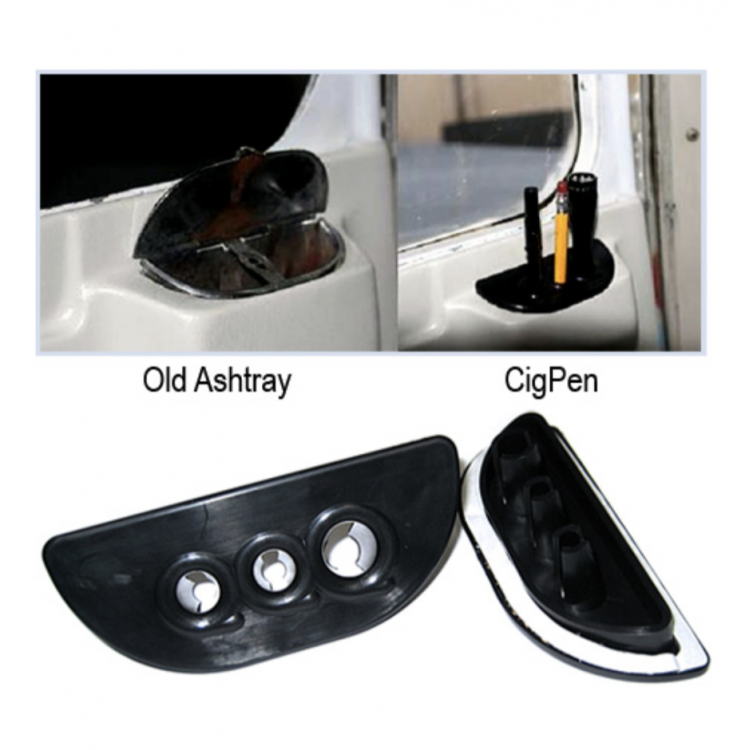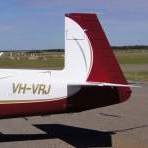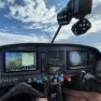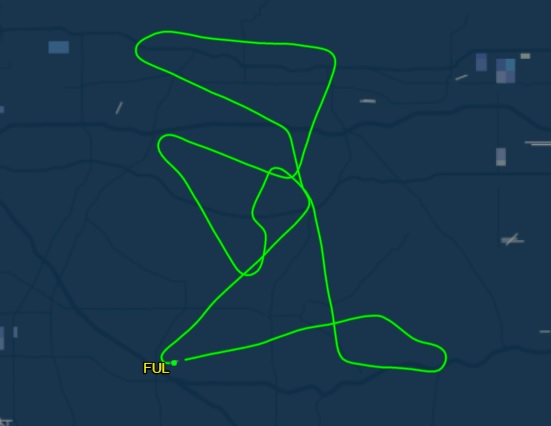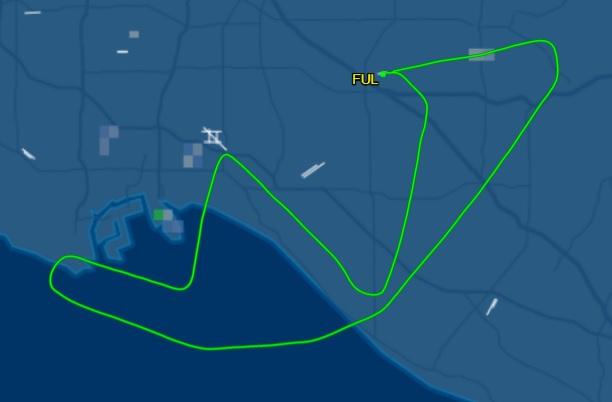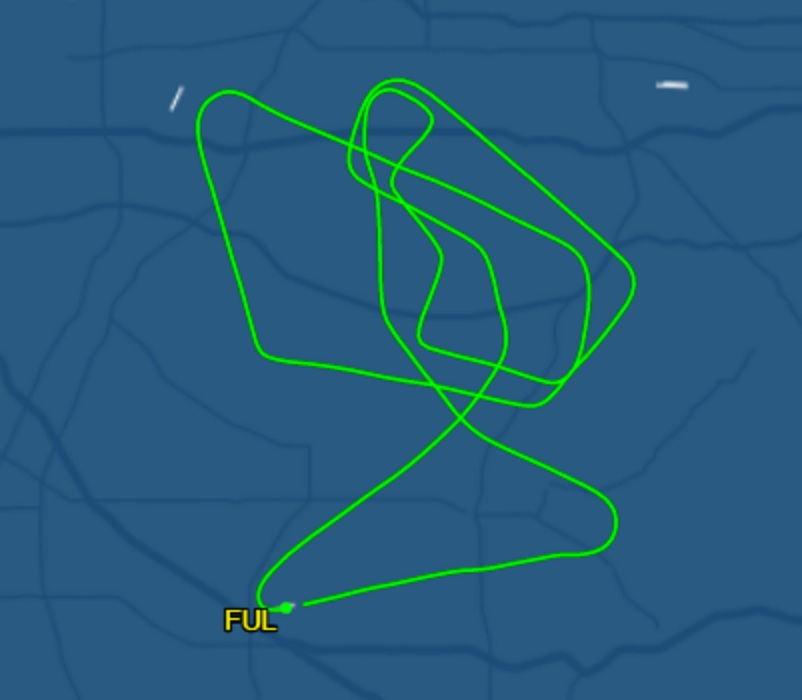Leaderboard
Popular Content
Showing content with the highest reputation on 03/08/2021 in all areas
-
On a simple 4-cylinder engine, the Mooney squeezes out quite a bang for the buck. The following compares the 201 model comfort, load, performance, efficiency and safety to other aircraft. Enjoy! Comfort One common misconception is that the Mooney ain’t the most roomy plane around. People have said that the cabin feels cramped. Despite that claim, the Mooney is still bigger than most four-seater planes. Check this out: Aircraft Cabin Width Cabin Height Mooney 201 43.5″ 44.5″ Beechcraft V35 Bonanza 42.0″ 50.0″ Cessna 182 42.0″ 48.0″ Piper Arrow 41.0″ 45.0″ As you can see, the Mooney has the widest cabin among all of these aircraft. But, it also happens to have the shortest cabin height, which is probably why it has the reputation for being somewhat cramped inside. Nevertheless, it’s a reputation that’s hardly deserved. Utility Let’s take a look at the load-hauling capabilities of various airplanes: Aircraft Useful Load Payload w/Full Fuel Beechcraft V35 Bonanza 1270 lbs 826 lbs Mooney 201 1100 lbs 716 lbs Cessna 182 1219 lbs 691 lbs Piper Arrow 960 lbs 572 lbs Ok, the Mooney is obviously not as good of a load hauler as a Bonanza, but you have to look more closely to see that it actually is…the funny thing about the Bonanza is that if you take off with full fuel and four passengers, as you burn off fuel the center of gravity moves aft of the limit! The Bonanza has a very narrow CG range. So, unless your Bonanza is equipped for in-flight refueling, the Mooney ends up being able to haul a bigger load farther in the end. And when the tanks are topped off, the Mooney even beats the Cessna 182 in terms of the crap you can carry. Not too shabby for a “smaller” plane. Performance and Efficiency Since we’re talking about topping off tanks, let’s get down to the real heart of the Mooney’s superiority. Regardless of what the factory claims (169 knots), my 1977 Mooney 201 cruises at 160 KTAS at 8000′ at 70% power. This is while sipping a mere 10.5 gallons per hour of 100LL. Let’s take a look at performance figures for various aircraft (all figures represent 75% power, leaned to best economy, VFR reserve; the trip cost is calculated with a fuel price of $2.50 per gallon): Aircraft HP Climb Rate Usable Fuel Cruise Consumption Endurance Range Mi. per Gallon 500nm Trip Mooney 201 200 1030 fpm 64 gal 160 kts 10.5 gph 5:35 895 nm 15.2 $82 Piper Arrow 200 831 fpm 72 gal 137 kts 10.5 gph 6:20 870 nm 13.0 $96 Beechcraft V35 Bonanza 260 1150 fpm 74 gal 160 kts 14.0 gph 4:45 765 nm 11.4 $109 Cessna 182 230 924 fpm 88 gal 140 kts 13.5 gph 6:00 842 nm 10.4 $121 As you can see, the Mooney flies circles around its competition in the performance and efficiency category. The Mooney literally covers more distance in less time using less fuel! Why is this so? How does a Mooney manage to squeeze out that kind of performance from just a 200 hp four-banger? It all comes down to design. The Mooney is one of the cleanest planes out there (pre-composite era, of course). The 201 cowl and aerodynamic cleanup was a major accomplishment on the part of Roy LoPresti and Mooney. Here’s a great comparison of various lightplanes and their respective dragginess: Parasite Drag Coefficients & Flat Plat Area Aircraft CDP Flat Plate Area (sq. ft.) Mooney 201 0.017 2.81 Beech Bonanza 0.019 3.47 Piper Arrow 0.027 4.64 Cessna 182 0.031 5.27 Beech Sierra 0.034 5.02 Piper Warrior 0.034 5.83 Cessna 172 0.036 6.25 Cessna 152 0.038 6.14 Beech Skipper 0.049 6.36 Piper Tomahawk 0.054 6.64 Handling The Mooney’s handling is, in a word, impeccable. With control rods all around, the plane responds immediately to the slightest input from the pilot. Yet when you trim the plane up, it flies completely hands-off! You really don’t even need an autopilot (although it’s irreplaceable for IFR flight). Also, despite what people say, Mooneys are not hard to land, and they’re not difficult to slow down. As long as you stay ahead of the aircraft and plan your descents and power changes, it’s trivial. Speed brakes definitely aid pilots in getting Mooneys down more quickly without having to chop power (although there’s still quite a bit of debate over whether or not shock cooling is really a factor) or pick up excessive speed (although the yellow arc and redline in my 201 are very liberal), but I don’t have speed brakes and I don’t feel like I need them. Still, I’m sure any Mooney pilot will tell you that the Mooney really separates the good from the bad, in terms of the pilot at the controls. Safety When you address the issue of safety, the Mooney 201 is one of the safest planes in the sky according to the statistics. The Mooney’s steel tube rollbar cabin frame provides exceptional structural integrity. I have read countless articles and have seen photos that provide evidence of this. People have walked away from crashes in Mooneys where the cabin remained intact, saving their lives. In most other aircraft it would not have ended that way… Also, I’ve heard people talking about the Lancair’s strength, and how the test rig broke before the wing spars did. Yeah, yeah, whatever. Little known fact: the same thing happened at Mooney. Mooney factory engineers broke a static test fixture at 9.3 Gs while trying a destructive test on the J model wing. Anyway, you’re not going to break a Mooney! So there you have it. That’s just a handful of the reasons why I love owning a Mooney. Sure, there are quirks, like with any other aircraft, but at this point in my life (until I can afford a TBM-700, Meridian, or Pilatus) the Mooney is perfect for me.6 points
-
It's really not that much. I mean, I'm at 15,000 10 min after brake release which is 1/6 of an hour..so at most 6 gallons to climb. Then I'm doing 198 KTAS around 18.5 gph...which is a lot, I grant you...but God is it glorious. And that's 65% power: loafing, not even pushing the engine at all. It's what Disney long ago called an "E-ticket ride"4 points
-
Flight #5 yesterday. We flew the RNAV GPS approach into KTOA again and then the missed approach with the hold. The radio work was a little better although I lost track of where I was on the approach into KTOA and into KFUL and didn't get my gear down and configured before crossing the FAF resulting in being behind the plane the rest of the approach. Still, small steps forward, next flight is Wednesday evening. Complete writeup on my blog along with the audio of the tower telling me to "keep in your own lane sir" when I drifted over the parallel runway at KTOA flying the missed approach. https://intothesky.com/2021/03/07/ifr-training-great-kid-dont-get-cocky/4 points
-
Hey guys, I thought I would upload this simple hack. Most portable/handheld Garmin units come with a yoke mount. Mine sat on the shelf until now. This aluminum yoke mount can be used as a oil filter cutter. All you need is the little cutting wheel and this one dollar packet of hardware from Lowe’s. It works just as well as the $100 cutters out there.3 points
-
I did back in the mid 90s. I have a little over 100 hours, mostly thermals but a bit of ridge and wave time.3 points
-
When I bought my K I asked here on MS if full tanks, 75 gal, was to the bottom of the filler neck or as much fuel as one could could stuff in while being patient. I didn't get any real good answers. The POH does not say. Logic would say 75 gallons is to the bottom of the filler neck since it gets pretty tedious to fill past that. But when my JPI + CIES was installed and the shop calibrated the system it turned out that 75 gallons is as much as you can stuff in. It is about 5 gallons total, or 2.5 gallons per side, between the bottom of the filler neck and totally full. A couple years ago I was in North Las Vegas. I asked the line guys to fill the plane as full as possible. We were there for a week. As departure day got closer, I find that I should expect 45 Kt headwinds all the way back to KRHV. So I wanted the plane really full. Call the FBO and find out how much fuel was loaded, and it was short. So I went out and supervised the truck put an additional 12 gallons in a supposedly full pair of tanks. Only maybe 1 in 10 times will an un-supervised line guy be patient enough to really top off the airplane. I've had to call for a top-off a few times when I really needed every last gallon. Larry3 points
-
The first time I flew a Rocket, someone asked me to fly it to the paint shop in Wickenburg from Steller Air Park. At the time the base of the class C was at 4000. I had never flown a Rocket before and this one had a verniers throttle. After takeoff, I was at the base of the class C in no time and I couldn’t get that damn throttle to come back fast enough, so I worked on the trim. Damn that thing could climb!3 points
-
That cowling appears to be installed incorrectly. That U-channel with the cam loc should be on the inside of the firewall flange. That camloc will then go through the firewall flange into the u-channel along with the screw on the upper cowling.3 points
-
2 points
-
I should add the @carusoam caveat that I am not an AME / A&P or avionics technician, so take my comments as worthless until confirmed by one of those. There are several really good ones on this forum so expect to hear from one soon. The Carusoam Caveat. Did I just coin a new phrase?2 points
-
2 points
-
Knowing nothing about this particular airplane, the first thoughts that strike me are if he was that devoted to his airplane, it would've been in better shape, and secondly, Camguard isn't a magic solution that keeps idle engines sitting around for years from rusting. Where is the airplane located? What are the total times on AF and engine? Do you have access to the logbooks? Steve2 points
-
How did you determine there is no problems with the cam or lifters? Did you pull the cylinders?2 points
-
2 points
-
Short regional airline career and more family heartbreak: I left my family in early January 2020 and flew out to CAE for an ATP CTP ground program. It involved 40 hours or so of ground instruction, a written exam, and 10 hours of Level D sim time. For this program I logged Boeing 737 Level D sim time (pretty cool – especially since I wasn’t logging Mooney Missile time). Next stop was immediately INDOC which was a two-week program with two written tests at the end of each week. I passed the ATP written during this timeframe as well. Immediately following INDOC was systems. Sadly, my maternal grandmother passed away the Thursday late morning of the first week of systems. She was old, 91, and had various medical issues. She was going downhill fast the previous few weeks. We didn’t expect the end to be so quick, and as a positive she missed COVID passing away in late January 2020. She passed away holding my grandfathers hand with family around her at home. We were close, and this was not entirely unexpected. The airline flew me home last flight out Friday afternoon positive space. They took care of me here. The funeral was Sunday and I flew back on the first flight Monday. I missed one morning session of systems which I was caught up on. I passed my systems tests, got the ceremonial wings, ID card, KCM (Known Crew Member), CASS access, and flew back home. I was home for three weeks, arriving home late on Feb 14th (good day to get home for numerous reasons . A week later my wife’s maternal grandmother passed away. She also had failing health for years and was 92. My wife actually got to fly using the airline benefits to be there in Roanoke, VA, with her extended family, and unfortunately arrived minutes after her grandmother passed. She flew home the next day. Five days before the funeral, scheduled for the end of February (my wife’s family is not Jewish – nobody’s perfect my son William tested positive for flu. My daughter also ended up testing positive. We put them both on Tamiflu antiviral. My wife was feeling very tired and starting with symptoms. We went in ourselves to our doctor and as part of the testing for the flu they asked if she was pregnant. We explained what had occurred three months prior, but also that it could be possible recognizing her being tired, and it made sense to check for decisions on treatment. As it turns out we were indeed expecting again (yay Valentine’s day or a week later). We high fived each other right there in the exam room. It was very early. So, she was put on a different regime. She did test positive for flu so they didn’t bother testing me and I went on Tamiflu antiviral. We had decided that we’d name the child after both our grandmothers. We did attend the funeral out of town, and looking back, just a year later in this day and age, we would have skipped it so soon after testing positive for flu. It was about 5 days later of being on the antiviral. None of us were running fever by the time we traveled or we would not have gone. But still, now to “power though” is a faux pas and if you think you have any symptoms of any illness the accepted practice is to quarantine and stay home. This was just before COVID really hit. We drove the five hours as opposed to the one hour flight in the Missile. I could have requested insurance to cover a rental, but at this point we were already seven months from the incident and we decided to just drive. In early March I flew back to training to observe two of my classmates go through cockpit procedure training. We got one week off after that, and then came back to cockpit procedure training for me and my partner in late March 2020. One hour prior to beginning our cockpit procedure training I received a phone call from my wife that our son William was mid-seizure. This was his second major seizure. She described to me what was occurring, and it was a more intense version of what I personally witnessed the first time as he was bigger and stronger now, thus his muscles could twitch and jerk more violently. It was morning (all his observed seizures have been between 6AM and 8AM). Just like with me he vomited slightly so I had her put his head on his side and scoop out his mouth to ensure his airways were open. I told her to put the phone down, keep me on, and to administer the diastat emergency anti-seizure meds that we now had on hand. It’s basically a valium serum that you insert up the tush. She administered it. I put her on hold and called children’s hospital neurology department to see if our neurologist was available and for advice – we go the three way call going within a within just a few minutes. William was still seizing and not come out of it by 12 minutes into the phone call with Children’s. He was seizing for at least 10 minutes prior, and since it had been more than 5 minutes since administering the diastat, our neurologist, one of our five most trusted doctors (we have a team of 19 therapists and doctors for William), told my wife to hang up and call 911. So in late March 2020, as hospitals were trying to keep people away and lockdowns were happening, our almost three year old was rushed via ambulance to the hospital. My wife accompanied him, and our Au Pair picked them up later in the day. The choices were stay in the hospital for observation or get placed on an anti-seizure drug and get home and out of a potential exposure point. As this was his second seizure and you only get one free seizure, we opted for the anti-seizure drug. It was Keppra and we later learned he had a sustained negative emotional reaction to Keppra (such a sad kid who was easily made upset when on Keppra). We have since titrated over to Trileptal and he’s been his happy self on that. This was prior to his eventual Bohring-Opitz Syndrome diagnosis (late July 2020). I admit my concentration was not there the first day of cockpit procedure training. I basically got some text updates as to his condition as the ambulance arrived about 30 minutes prior to my first session. I informed my instructor and he asked if I needed to leave. I honestly said maybe but would stay until I had more information. I ended up staying for the five-day training cockpit procedure training. The market was in a freefall and COVID was taking over the United States. Lockdowns were beginning. Airlines were becoming empty, routes were getting slashed, it was the beginning of what we’ve come to recognize as a way of life the last year. I was amazed we were still training as other airlines were canceling their new classes. The classes after us were all sent home or postponed. We continued. I passed Cockpit Procedure training and went home. The airports were a ghost town – just a few days difference meant so much. I was one of 7 people on a mainline aircraft flying back home. Only 2 were paying passengers. When I returned home, I was home for a few weeks. I got my travel orders and left for sim training in April. I was not happy about the travel during COVID. We decided even though I had 2-3 breaks at a city that was a quick flight back and forth, and I had travel privileges, I was not to visit for fear of COVID exposure. I have asthma and more importantly didn’t want to harm my family. Our training footprint had a certain number of sim sessions. Toward the end of week two, with two sessions remaining, I was on the phone with my wife at the 10-week checkup for the pregnancy. Sadly, tragedy struck again. The fetus was again dead. The fetus hadn’t grown much at all past a few weeks. Just a speck. The timing was right when we had the flu. After what happened to my wife during the last miscarriage, we opted for a scheduled DNC. We scheduled it for the dates between week two and three where I would fly home and then if need be, postpone my third week (checkride week). I admit I was not as focused during those last two sim sessions before flying home. My instructor was fully supportive as I informed him of what was going on. I flew home and the next morning dropped my wife off at the hospital for her DNC. I was not allowed to be there with her due to COVID restrictions. I stayed nearby and got a call a few hours later that it went well and to come pick her up. I brought her home and tended to her for the next 48 hours. She said she was good enough so I flew back to the sim training for my checkride week. Two days before my checkride, anyone who had not yet taken their checkride was sent home. Myself included. All those who had passed their checkrides prior to that date never flew any IOE before being furloughed in October. It was obvious to me the airline saw the long term effects of COVID and got rid of anyone they could at that point. The difference a few days of decision making cost me the chance at a checkride. I can look back on the experience and know I received good training, 50+ hours in Level D sims, got paid to do it, and am a better pilot for it. I just wish I was given the opportunity to take my checkride, and hopefully earn my ATP and type rating. As I have my ATP CTP ground training and ATP written passed, as soon as I’m vaccinated and numbers look okay (this summer most likely) I’ll go the local flight school using a Seminole, or do a weekend course in NC where I received my commercial multi in a Baron, and earn my ATP. So, in this post summary: -We lost both maternal grandmothers and our kids Claire and William (Claire was very close with her great grandparents) lost both their great grandmothers in the span of two weeks -COVID swept the country. -William had his second major seizure. -We got pregnant again, we had another miscarriage, and I had to take my wife to the hospital for a procedure literally during the April 2020 at that time height of COVID. -I was sent home two days before my check ride and I no longer am employed by the airline. My regional career was just over four months. During my next post I’ll write about the Mooney engine update during this period as that was the only update, I had through April 2020. There was zero updates from MT on the propeller. To be continued . . .2 points
-
Balls to the wall in the climb. I get about 37.5", 2650 rpm, 34-36 gph (very cold air right now, 34 in summer). Right now with 75 gallons on board, me and my wife, about 3065 lb gross, around 1500 fpm. For the first several months I thought the thing was 35" and 2500 rpm but discovered (thanks to MS) that you get better cooling with full throttle. 30" and 2200 is a fine cruise setting but I can't imagine you can keep 130 KIAS with that and more than maybe 500 fpm?2 points
-
2 points
-
Storm, First let’s ask a few questions... like... why would your friend do that? If you have 305hp available, and you want to get to the flight levels... and cruise at maximum speed... Climbing out at 65%bhp sounds like leaving a lot of performance on the table... On the other hand, your friend has chosen a very cool approach to cylinder wear, and that must be important to him... No two Rocket flyers are going to operate the same way, every day... There are conservative, LOP days... flying slower, with maximum CHT and TIT control.... Then there are less conservative, ROP days... where flaming dragon mode is all the rage.... Friends don’t let friends fly conservatively all the time... PP thoughts only, wait for the Rocket men to stop in... Best regards, -a-2 points
-
2 points
-
Pretty unlikely. Insurance costs seem to run in cycles like most economic measures. And, increases and decreases will hit the entire market. So if your question is: Will insurance become so expensive that no one buys small airplanes any longer?, then historically, that hasn't happened. If your question is: Will Mooneys be singularly disadvantaged by insurance costs relative to competitive models? then I don't believe history has shown that to be the case either. Skip2 points
-
1 point
-
If its only an issue in Turbulence I wouldn't worry. I woud never use it turbulent air, the pilot can do a far better job than the AP. If it must be used in turblent air, then it should be used only in Pitch mode rather than altitude hold since the AP will stress the wings and tail far more than necessary. But mine will hold altitude within 20' in reasonably smooth air. Trim lock ups are a serious problem with an easy fix - see SB20-325 and SIM20-88A in the tech pubs section on www.Mooney.com The parts for the SI are not expensive nor is the labor to install it, this issue totalled a K model during landing not that long ago discussed here on MS too. On your #3, make sure the elevator trim rocker CB is always on before turning on master and avionics and that should fix the sonalert going on.1 point
-
I recal some (3/8"?) aluminium tubing connects the vent outlet of the main tank to the extended tank top. And yes, in order to fill the extened tanks, which are higher than main tanks, you have to have the main tank fuel cap in place or the fuel added to the extended tank will drain out the main tank filler neck hole. But without the vent line connected to the extended tank it would just trap air at the top of the main tank and prevent fuel from occupying the top of the main tank outboard. Or to put it another way, when you're filling both tanks the vent in the main tank gets filled with fuel rather than air till the fuel level comes down to below the top of the main tank. Even with the vent line interconnecting the tanks if still not easily able to get all the air out of the main tanks to fill with fuel - it takes some time and some burping.1 point
-
1 point
-
That makes perfect sense, I missed the fact that it was part of a sub-item in the limitations section. Was just reading it as a straight limitation. For the M20M through M20V, looks like page 6 & 7. Item 10g applies to alternators. At some point I’ll learn to pay attention to the details. As always, thanks for the quick answer!1 point
-
Hi William (same name as my son!)- I'm out with the regional I did the training with. I'm not out of the industry. I fly for a 135, will be flying jets for them soon (SF50), and am very open to returning to the 121 would at some point. However, the communication break down that occurred at the regional, asking me to get back for sim training to then send me home a few days later when I had my wife at the hospital after losing our second recent pregnancy - it left a bad taste in my mouth. Especially since I asked if it made better sense to push my training back for medical/family reasons. I even asked if it would montiarily cost the company as the sim might go unused. I made it a point to get back on time. Simply returning phone calls or email communication and getting better direction would have been appreciated. This was in stark contrast to just 8 weeks earlier when I was booked home positive space for my grandmother's funeral. I passed every written test with high marks and was ready for my checkride. I recognized COVID changed everything, and any pilot trainee that had not yet taken a checkride except those I'm aware of that already had their ATP and 121 experience, are all no longer with the company. Every single pilot from my class that passed the checkride prior to the day we were sent home was furloughed along with a lot of others. The company made the business decision to clear the books and stop future losses on anyone they legally could - I get that. However, the change in culture and lack of communication, the way I was treated and between the line perceived threats, which I can get into during a PM or phone call with more details it what caused me to decide I'm out with that firm. Also, since then, not having the threat of potentially required exposure to COVID and being home with my now diagnosed son with Bohring-Opitz Syndrome - I'm fine being home vs on the road as much. This may change as he ages (hopefully). I would be open to Spirit, but I need my ATP and experience before I can go there. Also, they don't have a base in the DC region for now - not a dealbreaker, but I'd try elsewhere first - especially with the upcoming pilot shortage in a few years again. That's why I'm going to finish off my ATP this summer. I will indeed look at Spirit. I've heard good things about the pilot group and company. PM me and we'll chat. Take care, -Seth1 point
-
Perhaps they just feel having a Microsoft Exchange email account is just too exposed to Chinese hacking and AOL is the safer option....1 point
-
All of this is true, but remember that the originals are likely 40-50 years old. I've repaired mine also and they looked good....for a couple years. Then the 50 year old plastic started doing what 50 year old plastic does. Eventually it's like trying to glue potato chips back together. The plane plastics panels do require trimming, but it's not rocket science and...to me...worth the effort. I'm actually in the middle of replacing the wall panel right now. Will be trimming it today.1 point
-
Thanks Cliff. I could read that info again and again and never tire from it.1 point
-
1 point
-
Brad- Do it! The Commercial is the most fun of the checkrides. During my oral for the commercial I stated that I look at every checkride as a learning experience and hope that I'm able to communicate a proficiency level on the required material so that we can continue with the practical test. Most examiners do not have a lot of Mooney time. So do tell they if they want to demonstrate a lazy 8 or other maneuver they can. My examiner asked if he could show me what he was looking for in a lazy 8 and I asked him to demonstrate. It was THE WORST lazy 8 I'd ever seen in the Mooney Missile (heavy nose). He looked at me afterward and said "you really know your airplane" and then "let's go back to the field for some landings). -Seth1 point
-
Thanks Alex! I'm not going back - go ahead and PM me with contact info - I'll call with the information you requested. I wish no ill will on the airline but they did not handle things in a professional manner. It went from taking care of their own to getting as many off the books as possible - which is a good business move - it just sucked timing wise - and the communication and circumstances left a lot be desired along with the reasoning and threats - again - happy to talk one on one with anyone about it - just not going to post those details on a public forum. The timing was insane. Pax rates are indeed back up to 50% but aircraft schedules and flights are a fraction of what they used to be, thus trip flexibility is low and seats per plane are filling up. In a few years, there will be more people retired from the industry, more pilots not coming back who got burned, and all of a sudden demand will again plow on. The advanced algorithms will have to add flights, and there will be a big pilot shortage come 2025/2026 and beyond until virtual first officers become a thing. And vaccine wise - I'm set for mine Frida 3/12. I hope it does indeed work enough to get heard immunity occurring faster. I qualify in my state due to: -Being a caretaker for a disabled person (William is also diagnosed with IDD - Intellectual Development Disability) -Being an organ transport pilot (part 135 multiple trips the past few months) -Transporting sick people to their appointments (again, 135 flying clients to specialized treatments). -Seth1 point
-
Get some "bullets" made to help line up the engine into the mount bolts. "Bullets" are like ground down old bolts to helo center the engine to go over the last couple bolts, except you'll use these bullets and then swap them out with the real bolts. They also help you keep from damaging the threads on the new bolts as you work hard to get them intio alignment. A hoist that also includes a leveler - which hopefully your mechanic already has - is also really helpful to lower the engine without it being tilted. As always putting it back together takes 3x as long as it took to get it off, but to get it to align up on all 4 bolts is much easier with 2 people.1 point
-
No troll. I would also like to explore the country too. With the speed and the Bahamas should be pretty easy. Was looking at M20R Ovation 2. I really like the speed and fuel burn on these monneys.1 point
-
I’m glad too about the Garmin choice - yea, with 20 years off it’s all new again ;o). I’m wanting to get real comfortable with the Mooney then off I go! Almost 30 hrs on her since I got her. I’ll get the GoPro going soon. The challenges of the Mooney sure keep you on your game ;o) ‘Thanks for watching’ ;o) -Don1 point
-
Perfect for those long trans-Atlantic flights... Some MSers have crossed the country on their long X-countries... Best regards, -a-1 point
-
I'm not a CFI, but I found one. Harold Dramstad M20F time. Vetter Aviation, Helena Mt. 406-443-0066 www.flyvetter.com They have a M20F renter there. $120 wet. Seems like a really good rate; is that right?1 point
-
Not necessarily. The Mooney still senses that there's some money remaining in your wallet and wants to help relieve you of it.1 point
-
1 point
-
I’d be interested in seeing the certification criteria these companies are being subject to by the FAA. I can’t help but feel the FAA was advertising lightening up the certification criteria to enhance safety in older aircraft, while at the same time requiring so much data and testing as it becomes financially unreasonable for a company to provide an affordable system, therefore no liability on the Faa. The whole concept of a servo that moves the flight control driven by some navigational guidance, just doesn’t seem all that complicated. It’s simply doing the same thing the knucklehead behind the yoke would do, only with better attention and higher precision.1 point
-
I have the same plan, but honestly for me spending a minimum of $10k on the Monroy tanks didn't make sense vs just going straight to a temporary Turtlepac install. (I have plans to go well beyond just the Atlantic though).1 point
-
Flights 2 and 3 were last Wednesday evening and Saturday morning. Flying at night with foggles is great, there are no shadows from the sun to give you any outside reference. We just did more basic maneuvers (turns/climbs/descents/straight and level) along with some more unusual attitude recoveries. The first couple were easy, the third one after a couple turns I lost track of what he was doing and had no idea what I was going to see on the AI when he said "recover." That was a great experience. Saturday we flew a practice approach into Long Beach and did some partial panel work before going back to the practice approach into KFUL. For the partial panel he just reached over and turned off both G5's which left me with the backup AI that replaced my turn coordinator and I used that along with the ASI/Altimeter/VSI/Compass Card for some climbs/descents and compass turns before he gave me the G5's back. I used lower RPM and MP (2,350 and 18") which made things much easier. I wasn't behind the plane but adding in the communications with ATC and phraseology I'm not familiar with in flying approaches had me behind the radios. I'm otherwise great on the radios flying around the busy SoCal area and on flight following often so I'm confident that with a little more repetition that will come along nicely. https://intothesky.com/2021/02/28/ifr-training-flights-2-3/1 point
-
You know this is a great title for a thread. We should post this every year and call it "I'm glad I cancelled my flight 2021". "I'm glad I cancelled my flight 2022". And we post if we have such an example of a good aeronautical decision making. We should all be glad we have cancelled a flight sometimes and self talk and community thinking community affirmation on this matter is good for us. Well done. I know this flight wasn't dangerous, but its a great title.1 point
-
I took my first IFR training flight yesterday. I loved it even though I was chasing the plane, felt like I was behind it almost the whole time, and ended up so task saturated that on our return while flying the RNAV into KFUL I was looking at the vertical deviation which showed us above glideslope but I was holding us level thinking we were below glideslope. I have used it enough just for fun in VFR conditions that I know how to read the instrument, but my brain was not helping me out... Some great experience and looking forward to the next flight Wednesday night. If you want to read about the flight I wrote it up on my blog. https://intothesky.com/2021/02/21/ifr-training-chasing-the-plane/1 point
-
Great pirep for Whelen and OSUAV8TER... Thanks for sharing them Scott! Best regards, -a-1 point
-
Thanks Steve and -a- I appreciate your guidance. I have found a general Ovation 2 POH. I will review Don Kaye’s training resources. I used to fly and tow gliders in Europe but that’s ages ago. My most recent experience is SR22T G3 Avydine v7. My offer was accepted an hour ago so I guess I semi-own a Mooney now!1 point
-
Oh ya, forgot, my technique. '78 J. WOT, 2700 RPM, full rich for takeoff. At 100 KIAS, cowl flaps to trailing. Keep this until 1000 AGL. At 1000 AGL, lower the nose and climb at 115 KIAS. As I climb, lean to 1300 EGT on #4 which I know is the hottest cylinder. That's what it is at takeoff and about 220 or 230 ROP on my engine. When my climb drops to 500 FPM, maintain 500 FPM until I'm down to 100 KIAS then climb the rest of the way at 100 KIAS. At 7500' start leaning to 1350 instead of 1300. Above that the engine will be making less than 75% power so I'm not concerned about detonation. I've tried leaning to max power of about 1400 (about 100 ROP) but I've found that I may need to open the cowl flaps to full open to keep my hottest cylinder below 400.1 point
-
We now interrupt your currently scheduled discussion of accents to return you to your regular programming of the actual thread... After this you can go back to talking about how everyone talks differently. I was fortunate to get a great DPE whom I think has the right perspective on a check-ride. Check Ride!!!! The day is finally here! When this was scheduled a few weeks ago it seemed so far away... It was hard to believe as I was driving to the airport that by this afternoon I was very likely going to have my Private Pilot Certificate (unless something completely unexpected happened). I was a little nervous, but I felt prepared. As long as I made it through the oral portion I felt good about my flying. The weather was terrible on the way there. When I got to the intersection at the south-west corner of the airport the visibility was less than a 1/4 mile because of the fog. As I drove by the end of the runways I could barely make out the Control Tower and the beacon on top. However this was all completely expected. I normally schedule my flights later in the afternoon to give the morning mist/haze time to dissipate and I had been watching the TAF's (Terminal Area Forecast) for KONT (Ontario) 5 miles to the north of Chino over the last few days as well as the actual conditions. Every morning it was IFR conditions and by about 1pm everything cleared up and it was good VFR weather. The TAF for today said that by 1pm it would be cleared up. I got to the airport at 8am, an hour before my 9am appointment to go over the logbooks for the plane and do a walk-around, just to make sure everything looked good. The owner of the school sat down with my CFI and myself. We went through the logs to make sure I knew where all the different inspections had been recorded so that I could show the Examiner that the plane was air worthy. I went out and did a quick visual inspection of the plane. Everything looked great, except I had a question about the right main tire. The nose and left main had been replaced very recently and looked almost new. The right main had just a little tread on the outside but the inside was bald. I have flown with it like that for a long time and knew my CFI had said it was fine, but I wanted to make sure that the Examiner wouldn't have any concerns about it so we went in to ask the owner of the school what he thought. He asked if there were any cords showing on the tire and we informed him there weren't. He said that as long as there weren't any cords showing, and actually as long as there wasn't more than two cords showing it was fine. He said that the Examiner is very familiar with the school's planes and that he wouldn't have any problems with it, but if the Examiner did have a concern to just come find him. With all of that last minute stuff done there was nothing to do except sit around and chat with my CFI and the owner of the flight school while we waited for the Examiner. A few minutes before 9am he arrived and I was introduced to him. We went back to the owner's office and began to get to know each other. He did his best to put me at ease. He let me know that he wasn't there to trick me on anything, but that it was the 'Practical Test' and that we would go through a lot of different scenarios. He also went through the briefing that the FAA has him do prior to starting the test so that I know what is expected. He told me that for the oral portion of the exam, it isn't perfection that he is looking for, but 70% like on the knowledge test. Once we were flying then all I had to do was stay within the parameters set by the ACS (Airmen Certification Standards). He also said that if it was one of the maneuvers that allows for +/- 100' and I am 105' off as long as I know what I did and correct it then that would be fine. The plan would be to take our time with the oral portion of the exam, take a break for lunch around noon, and then come back and fly when the weather should be cleared up. When he told me that he only had one person not make it through the oral portion I relaxed a little more. That person had planned their flights with charts that had expired years ago, and then the exam went downhill from there. He said that we would now begin the exam and I gave him the cash which he placed in his bag without counting it. He went through my logbook to make sure I had met all the requirements and had the necessary endorsements. Next we took a look at the logbooks for the plane to make sure I knew how to determine if it was current on all of the required inspections and AD's (Airworthiness Directives which are like mandatory recalls on a car) and that the plane was airworthy. We started out by going over the results of my Knowledge (written) test. I had made notes of the seven questions that I missed, what I had answered, why I had answered the way I did, and what the correct answers should have been. I think that because I had scored well, 88%, that perhaps it made the oral portion a little easier than had I squeaked by with a 70%. After that he started with his plan and we began working our way through the ACS. It really seemed more like a discussion and less of an exam. He would frame different scenarios to see how I would handle them. We would discuss a subject and then he would give me some real life scenarios and how they were handled. Scenarios where the pilot handled it correctly and everyone was okay, and others where the pilot unfortunately made a series of incorrect decisions which ended with the loss of life. He has been flying for airlines for 30 years and with that experience, plus all of his time flying General Aviation planes, plus his experiences as an Examiner, he had plenty of scenarios to draw from as he tested my understanding of both flying and the rules and regulations that govern flying. The oral portion of the exam lasted just under four hours. I was actually surprised at how long it had gone because it went by very fast. We spent probably about 30 minutes of him going over my logbook and getting all the paperwork in order. There was probably about 1 1/2-2 hours of time that I spent actually answering questions and responding to the different scenarios that he brought up. The balance of 1 1/2-2 hours was spent with either him telling me stories and experiences that he had, or myself telling him of different experiences that I had growing up around planes in the Air Force and then as I went through my pilot training. For example, after I explained the rules regarding the use of safety belts, he told me of his son who had to make an emergency landing in a plane a few years ago. He said that he was at the airport when his son left. Some time later he received a call from a friend that asked if his son was flying a Luscombe. When he responded that he was, his friend told him that one had just gone down nearby. The plane did not have shoulder harnesses and when he was trying to land it in a field it caught a berm it came to a sudden stop and he smashed into the instrument panel causing sever injuries. If he had shoulder harnesses it would have only resulted in minor injuries. By putting real world examples to the rules and regulations it really helps stuff to sink in. Just before 1pm he said we were at the end and that we could take a break to get some lunch and meet back at the plane. I asked what there was around there to eat (not my part of town and I have never gone to eat around there). He offered to let me ride with him to get some lunch and I took him up on the offer. However before we went to lunch he gave me the pre-flight briefing so I would know what to expect. We would start out doing all my take offs and landings here at Chino where I was familiar with everything. Once those were done we would make a full stop and taxi back to get set and start my cross country. We would need to arrive at each checkpoint within 5 minutes of the time I had planned for. Once we passed the first two check points he would have me put on the foggles and he would give me vectors and altitudes to fly around Ontario's Charlie airspace to the practice area at the base of the Cajon Pass. There we would perform all the maneuvers that are done at altitude after which there would be a situation that would require an emergency descent. Once we lost the altitude we would do a ground reference maneuver, followed by a diversion to another airport before returning to Chino. As we came out of the office my CFI was sitting in the lobby area and asked how everything went. I told him that it must have gone well because we were going to get some lunch and then go flying. They told me that my wife had stopped by, she thought I was going to be done at 11am, they let her know it would be much later. (I found a sweet note on my windshield from her when I was finished, it has been 7 years to the day since our first date). I also had a friend who follows the blog that had stopped by as well to wish me good luck. We ended up at Subway and enjoyed some nice conversation during lunch. With some food in our bellies we headed back to the airport. By this time I was feeling very relaxed around the Examiner, like I was going to just go on a flight with my CFI. We headed outside and I went to the plane while the Examiner went over to talk with the school's mechanic and another CFI. I began the pre-flight and got to the point of checking the fuel in the right wing and saw that there was less than half a tank. I walked around and took a look in the left tank and it was almost empty. That just wouldn't do, so I walked over to where the Examiner was talking to the mechanic and asked him if someone could come put some fuel in the plane. As the ground crew was finishing up fueling the plane to the tabs the Examiner came over to join me on the pre-flight. I was expecting to be asked all kinds of questions about the plane as we did the pre-flight, the way that my CFI had quizzed me the last time we flew together. This was nothing like that at all. In fact the only things he really said about the plane during the pre-flight was to comment on the odd wear on the right main tire, followed by a "but there aren't any cords showing so you're good." He told me to just not lock up the brakes and blow out the tires. I told him I hadn't locked up the brakes yet and I wasn't going to start today. With the pre-flight done we climbed into the cabin and got situated with seat belts and the remainder of the engine start checklist. The engine fired right up and we started our taxi down to the end of the hangar row at about 2pm. I switched to the ATIS and made notes of the current weather. The winds were 230° at 7 knots. That would be great, not directly down the runways, but it would help to reduce my ground speed on final which would make it easier to hit the numbers on my short field landings. I switched over to the frequency for Ground in time for a little pre-flight entertainment. Ground: "Where did you want to go?" (Asking a plane that had just cleared the runway where he was trying to taxi to) Pilot: "I private pilot." (I'm not kidding, that was exactly what he said, with an accent, although I won't say what kind of accent it was...) Ground: "Yes, but where do you want to go?" Pilot: "No, I private pilot." (He seriously said that) Ground: "I know you're a pilot, but what is your destination on the ground?" At this point I looked over at the Examiner and said "This could take a little while," to which he responded "It sounds like it." The Ground controller finally got the destination from the pilot and then was nice enough to give him the phone number for the place he was trying to get to. I won't name it to protect the innocent/guilty, you decide which. At last I had my chance to jump on the radio. Me: "Chino Ground, Cherokee 5800Uniform, at DuBois, request taxi runway 26R with information Charlie." Ground: "Cherokee 5800Uniform, taxi 26R via Papa cross 21, Charlie is the current information." Me: "Taxi 26R via Papa, cross 21, 00Uniform." I started to roll forward, but Ground wasn't done with me yet. Ground: "Cherokee 00Uniform, please advise that you have information Charlie." I glanced over at the Examiner and said "I told him that the first time." He just responded with a smile and "I heard you tell him." I think that the interchange that he just went through with the pilot who had minimal English skills maybe had him a little off his game. Me: (Talking to Ground) "Yes, I have information Charlie." As we were taxiing to the run-up area we heard the Ground controller refer to Denver Approach and then quickly corrected to SoCal Approach which brought a chuckle and a "He's a little far from home" comment from the Examiner. Even the guys in the tower can have a rough day sometimes... I finished the run-up and everything looked good. I told him that if he was a regular passenger I would give him the following briefing. I told him how important it is that when we are departing the airport and on our way back from the time I contact the tower until we are off the runway that there was to be no random conversations, only necessary comments. I told him that I expected him to help me watch for other airplanes and to point any out to me that he saw. I then went through the abort plans if we still had enough runway left to stop on it or settle back down on it (CNO has long runways), if we were under 600' AGL and out of runway we would be landing in the fields off the end of the runway, or if we had already started our crosswind and had problems we would try to make a turn back to runway 3 or end up landing in the fields to the South of the runway. I made sure he knew how to work the door and told him that if we were going to make an emergency landing he would need to open the door before we were on the ground so it wouldn't get jammed shut, trapping us inside. With the briefing done he told me to request right closed traffic and we would get started on my takeoffs and landings. I told him the tower likes to put you in left traffic for 26L when you are doing pattern work and keep 26R for departures and full stop landings. He said to ask for whichever I wanted. Me: "Chino Tower, Cherokee 5800Uniform, holding short 26R at Papa, requesting left closed traffic." Tower: "Cherokee 5800Uniform, make right closed traffic, runway 26R, cleared for takeoff." DPE: (To me) "I'd take it." Me: "Make right closed traffic, 26R, cleared for takeoff, 00Uniform." The benefit of right traffic on 26R is that it is a shorter runway than 26L which means that it doesn't take as long to get around the pattern. He told me to just perform a regular takeoff and then a short field landing. I made sure that I was set up perfectly on short final and was coming in nicely to put it down right on the numbers. I had just pulled the power and was beginning my flare when he said "Go around." I immediately went full power and took out the first notch of flaps. Once I had positive rate of climb the next notch of flaps came out, followed shortly by the last notch and we were climbing out. DPE: "You were set up perfect and I liked what I saw, but I had to see you do a go around. On this one just give me a normal landing." As we were on the downwind I heard him quietly try to contact the tower, but the tower hadn't heard him clearly and so he had to repeat what was a request for a short final. The tower gave the clearance and as we were abeam the numbers he looked over at me and said "You know what's about to happen." I replied "Yes" and he said, "You just lost your engine" as he reached over and pulled the power. I told him that I was pitching for best glide speed of 83mph and would be turning straight for the numbers. It still requires a conscious effort on my part to not pull back and instead keep the plane with the nose slightly down to keep my speed up. With no engine your mind wants you to pull back more and more to try and stay in the air, but that would only end in disaster. So, I kept the nose down enough to maintain 83mph and didn't put in any flaps because that just adds drag. I crossed over the numbers with plenty of speed and enough altitude that I set it down nicely just short of the 1000' markers. He had previously told me to configure for a short field takeoff after that landing so I added in two notches of flaps, went full power, and kept the yoke forward to stay on the ground past the normal rotation speed and instead rotated at Vx (74mph) and then climbed out. DPE: "Ok, this time we really will do a short field landing followed by a soft field take off." Me: "You want me to taxi back for the soft field take off?" DPE: "No, he (the tower) gave you the option and it's a long runway, just stop on the runway and then do the soft field take off." As we came around on final he asked what my touchdown point would be. I told him I was aiming for the numbers. I watched my speed and descent rate and was able to put it down gently right on the numbers. It was soft enough it could have even been a soft field landing. There was another plane behind us so he told me not to stop, just slow down and get configured before performing the soft field take off. As we slowed down I took out one notch of flaps and then went full power while holding the yoke back. We rotated off the ground just above stall speed, I pushed the yoke forward to stay in ground effect before climbing out at about 75mph. The last landing needed to be a soft field landing and I was feeling pretty good at this point. With the winds still coming in a little from the left of the runway I set it down gently and you could feel the left main touch, followed by the right main, and then the nose wheel, nice and smooth. We exited at the first taxiway exit and I contacted ground to taxi back. He told me to pick a way to keep track of the time that we departed so that I could see if we arrived at the checkpoints on time. I told him I was using the timer on the panel to keep track of flight time so that I remembered to switch fuel tanks an hour into our flying. I contacted the tower for a southeast departure and when I received clearance I looked over and the clock said 23 minutes. I told him we would use that as the start time. We took off and I made my crosswind turn followed by a turn to the heading I had on my flight plan. We arrived at my first checkpoint, the 91/15 interchange 1 minute past my planned time. I told the Examiner I knew what I had done wrong. I planned it from the time I made my crosswind and did not allow time for the actual takeoff. He said that I was well within the 5 minute margin of error. We arrived at my second checkpoint still the one minute off. At that point I put on the foggles and he gave me headings and altitudes to fly which took us around Ontario's airspace and then intercept a radial from the Pamona VOR on the way to the practice area at the base of the Cajon Pass. Since I already had the foggles on the first maneuver was unusual attitudes. I gave him the plane and looked down at my lap while he twisted and turned the plane to confuse me. When he gave me the plane back we were in a climbing turn so I immediately added power, while leveling the wings and pushing the yoke forward. He took the plane again and and gave it back to me in a banked dive. I pulled the power, leveled the wings and pulled back the yoke to level off. Then as the speed bled off I added back in the power. With those out of the way I took off the foggle and we started flight maneuvers. My steep turns were not my best, I lost about 90' during the turns that I picked back up as I rolled out. (The ACS is +/- 100') Next was a power off stall. I got set up in a stabilized descent, full flaps, at 80mph to simulate landing approach. Once I was at 80mph I pulled the power and then pulled back on the yoke. The plane stalled quickly and I added full power, pushed the yoke forward, removed the 1st notch of flaps and then removed the other two as the speed built back up. We climbed back up to altitude and I did a power on stall followed by slow flight. As I finished each maneuver he would say, "That takes care of that one" and we would move on to the next. With those completed he gave me the scenario that would bring us down to do the ground reference maneuvers. DPE: "Ok, here's the situation. You're flying along when you notice that your oil pressure is dropping and the oil temperature is climbing. You need to get on the ground before you lose your engine. I started looking around for someplace to land. DPE: "Take a good look everywhere. Maybe over to the south." Through the haze it looked like an airport out there. Me: "Is that Cable out there?" DPE: "No, that's the old Rialto airport that they closed. Can you use it?" Me: "Yeah, it's an emergency." DPE: "Good, remember that declaring an emergency is a tool that you can use when you need it." I turned toward Rialto and pushed the nose over to get there faster. Just then out in front I saw a small twin coming towards us. I pointed it out to him and said that I was going to turn to the right until he passed. As soon as he was past us I turned back toward Rialto and continued my emergency descent. As we got closer we could see that they had already torn up the runways and all that was left was gravel which still would have been better to land on than the fields or stream bed that were my other choices. He didn't let me descend all the way before telling me that it was good enough and to pick something to use for turns around a point. As it was a closed airport I did the turns around the old segmented circle next to the runways where there was once a windsock. As I was doing my turns he was tuning the radio to the ATIS from Ontario. DPE: "Those looked good, you know where I'm going to divert you to?" Me: "Sounds like Ontario." DPE: "Yes, and that will give us a chance to talk about wake turbulence. Get out your map, how far away are we?" I took out my TAC and a handy little card-stock ruler I had made. Me: "Looks like about 12 miles" DPE: "How long is that going to take us?" Me: "Maybe 7-8 minutes." DPE: "How much fuel will it take?" Me: "About a gallon." DPE: "Good. Ask them for a touch and go followed by a left turn out to Chino." I looked up the tower frequency and called them up. They must have been slow because even though I was still about 10 miles out the assigned me my squawk and cleared me to make straight for 26L, cleared for the touch and go with a left turn approved. A couple minutes went by and the tower called back. Tower: "Cherokee 5800Uniform, make your best speed, I have a 737 coming in behind you." Me: "I'll make best speed, 00Uniform." DPE: "You have some altitude to lose so go ahead and push the nose over. If it's a Continental (who he flies for) they come in fast and we won't have time. If it's Southwest they fly slower and we may make it." In a descent with full power the best speed I could make was 140mph and soon I had to back off the power a little to keep the engine from the red line. All we had to do was get across the approach for 26R where the 737 would be heading. We were successful as the tower didn't vector us to come around. Just then the tower called up the approaching 737 and sure enough, it was a Southwest plane. DPE: "I don't know what went wrong, maybe a bolt must have come loose but your flaps won't work for this landing." Me: "Ok." (No flap landings are not a problem, I just carry more speed on the approach and it's a 10,000' runway so I could land 4-5 times before running out of length) DPE: "This would be a good chance to show me a forward slip to a landing." I came in high so I could slip the plane down, brought it out of the slip just before flaring out and touched down, followed by full power and climbing out. I made my turn towards Chino, was given a frequency change and tuned in the ATIS. DPE: "Take us back for a normal landing and we'll fill out your paperwork." Me: "Sounds good." (Trying not to break out into a huge grin) DPE: "Your flaps are fixed now so you can use them." Me: "Wow, you're pretty good getting out there and fixing them in flight." DPE: "Well, I brought my Snap-On tools with me and I can fix anything with them." I contacted Chino tower asking for a full stop and was told to enter right base for 26R. DPE: "Looks like a bug must have flown into your PITOT mast because your airspeed indicator isn't working." (As he put a sticky on the airspeed indicator covering it up) I brought us in for a nice landing without the airspeed indicator. I floated it a little as I was carrying a little extra speed, better too much than too little, but was still able to make the first turn off at the 2000' mark. As I went through my post landing checklist and contacted ground to taxi back the Examiner congratulated me. We got back to the school, I shut the plane down and we went inside for a short post flight briefing and paperwork. My CFI was sitting at his desk with another student when I came walking in. I went over to him with a straight face and just looked at him until he asked "Well?" I said "I Passed!" The nervous look immediately left his face. While the Examiner was entering everything in the computer I sent my wife a quick text to let her know I had passed. I signed my temporary certificate and thanked the Examiner. I told him that I really did enjoy the whole process and that it was a pleasure to have him as my Examiner. This morning I thought it would just be something I had to work through, but it really was a lot of fun. We went out and took a picture, I thanked everyone at the school, and then got in the car to head home while making my post flight call to my Dad to fill him in on everything. I received an email from the school later congratulating me and telling me that the Examiner had said that was one of the more enjoyable check rides he had done and that I should be proud. As I sat having a celebratory dinner with my wife I told her I couldn't decide if I wanted to jump up and down shouting for joy or just sit there and cry for joy. What a strange mix of emotions. It took 40 years for this dream to come true, I am a pilot. Final numbers before the check ride: Total Flights: 27 Total Hours: 46.7 Dual Instruction hours: 32.4 Solo Flight hours: 14.3 Night hours: 4.2 Cross Country hours: 17.9 Landings: 136 (126 Day / 10 Night)1 point
-
I have an "unenhanced" original PC on my 'C'. I works well at leveling the wings. It is a great asset for single pilot IFR because you can turn loose of the controls to look at appraoch plates, etc. and it has been incredibly trouble-free and reliable for 14 years. However.... It is NOT an autopilot. It is a wing leveler. On a long cross country, it will hold a heading "for awhile", but it will eventually drift one way, or the other. It does not "hold" a heading. It levels the wings, using the small adjustment knob one can correct apparent drift left, or right, but eventuallly it will drift. When I compare the overall cost of ownership of an autopilot, it would be hard to beat the wing-leveler, but it is NOT an autopilot.1 point





